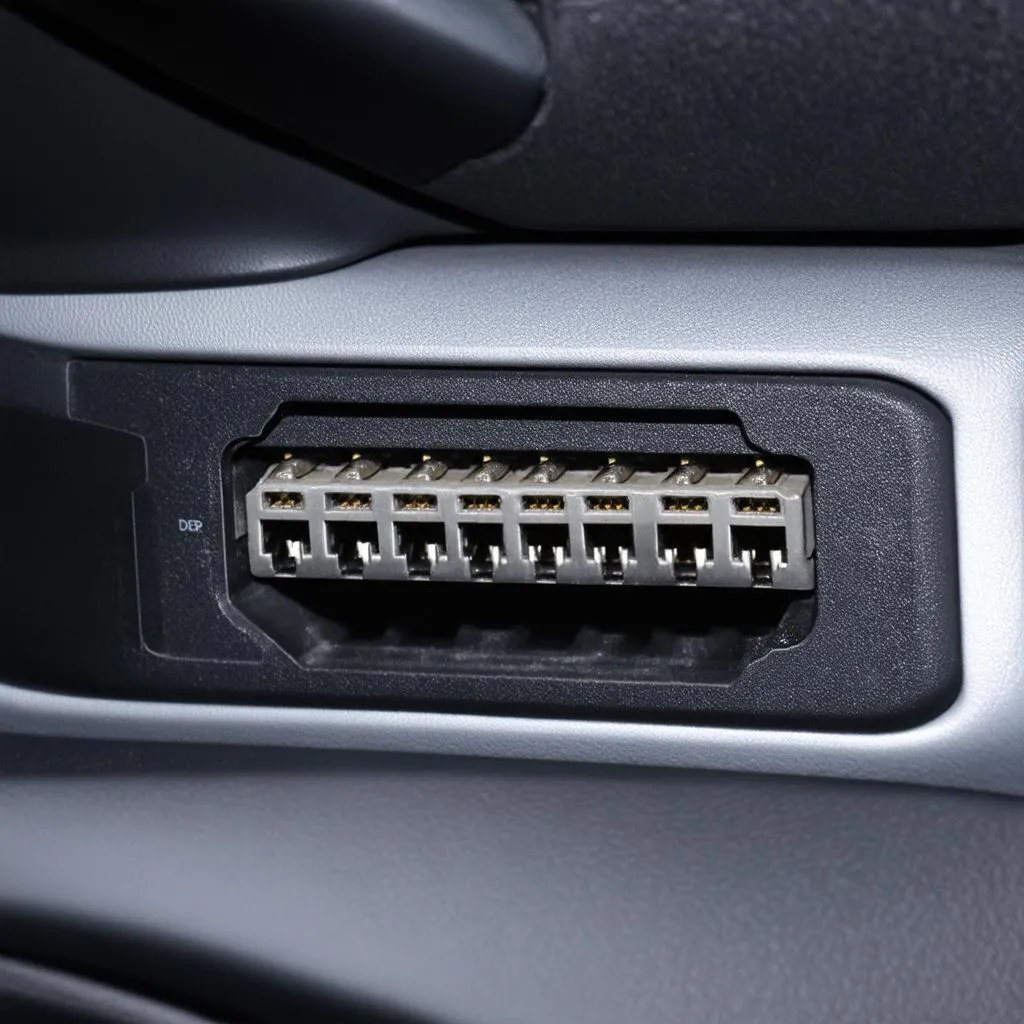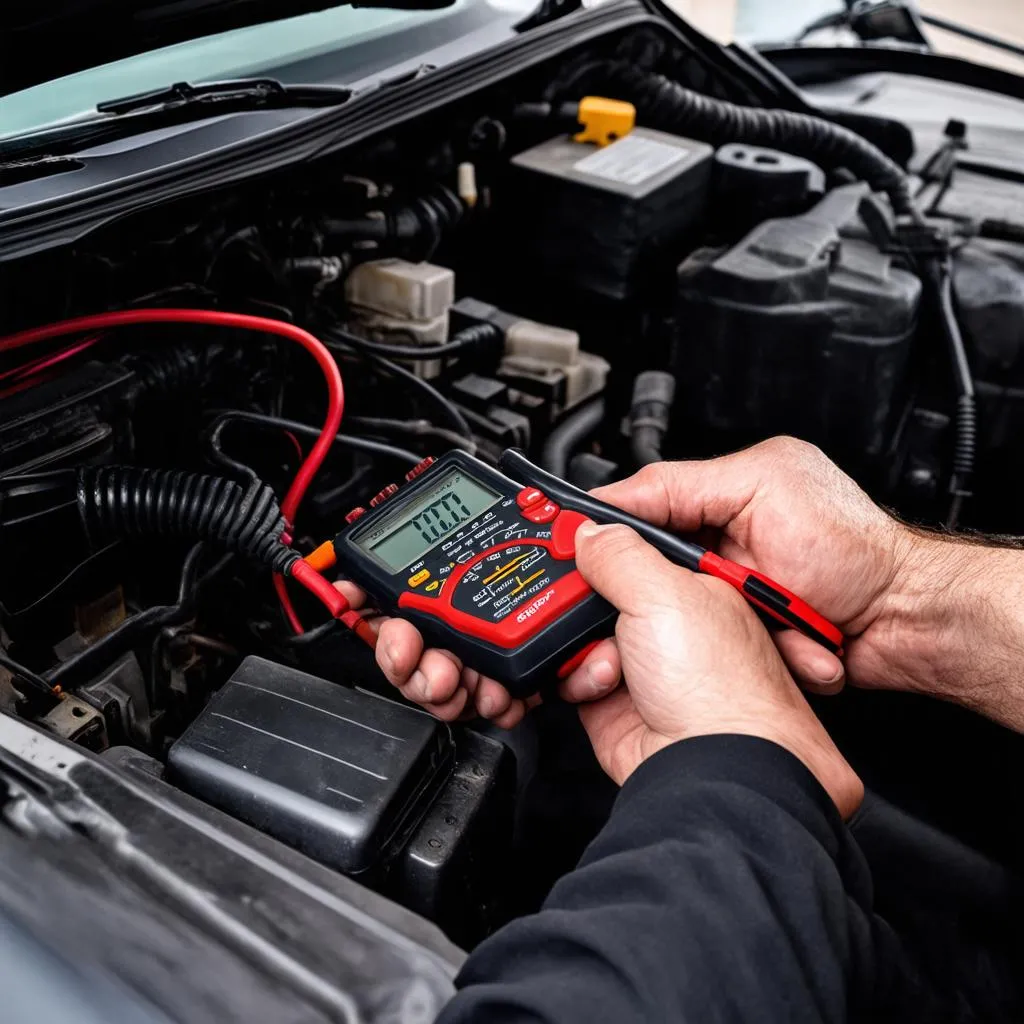Ever popped the hood of your 1G DSM, that sleek and sporty Mitsubishi Eclipse, Eagle Talon, or Plymouth Laser, ready to dive into some diagnostics, only to be met with confusion about the diagnostic port? You’re not alone! Many DSM owners find themselves scratching their heads, wondering, “Which one is the OBD port, and where does it get its power?”
Imagine this: you’ve got a check engine light glaring at you, a gremlin in your engine’s performance, or maybe you’re just itching to tinker with your car’s computer. You grab your trusty OBD scanner, eager to unlock the secrets hidden within your DSM’s electronic brain. But first, you need to find the right port and ensure it’s powered up.
Let’s shed some light on this common conundrum and get you back on the road to a happy, healthy DSM.
Decoding the 1G DSM Diagnostic Port Mystery
The first generation DSM, produced between 1990 and 1994, holds a unique place in automotive history. These turbocharged sport compacts were renowned for their performance potential and tunability. However, their diagnostic systems weren’t as standardized as later models, leading to some head-scratching moments for owners.
The Heart of the Matter: Power to the Port
Before we pinpoint the exact location of your 1G DSM’s diagnostic port, let’s address the power issue. Unlike modern OBD-II ports that draw power directly from the vehicle’s battery, the 1G DSM’s diagnostic port often relies on the ignition switch being in the “ON” position. This means the car doesn’t necessarily need to be running, but the key needs to be turned one click forward to supply power to the port.
Pinpointing the Port: Where to Connect
Now, for the million-dollar question: Where is the diagnostic port on a 1G DSM?
You’ll find it nestled beneath the dashboard, typically on the driver’s side. It’s a small, rectangular connector with a 12-pin configuration.
 1G DSM Diagnostic Port
1G DSM Diagnostic Port
Once you’ve located the port, check for any loose connections or damage to the pins. A well-maintained diagnostic port is crucial for accurate readings and communication with your scanner.
Troubleshooting Tips and FAQs
Still having trouble getting power to your 1G DSM’s diagnostic port? Here are a few troubleshooting tips:
- Check your fuses: A blown fuse could be the culprit. Consult your owner’s manual to locate the fuse associated with the diagnostic port.
- Inspect the wiring: Look for any frayed, broken, or corroded wires leading to the diagnostic port.
- Test the voltage: Use a multimeter to verify that power is reaching the port when the ignition is turned on.
FAQs
Q: Is my 1G DSM OBD-I or OBD-II compliant?
A: 1G DSMs (1990-1994) are OBD-I compliant. They utilize a 12-pin diagnostic connector and a different communication protocol than the standardized OBD-II system introduced in 1996.
Q: Can I use a standard OBD-II scanner on my 1G DSM?
A: While some basic OBD-II scanners might work with a 1G DSM, you’ll need an adapter cable and potentially specialized software to access all diagnostic functions.
Q: Where can I find reliable 1G DSM diagnostic tools and information?
A: Reputable online forums dedicated to DSMs, automotive repair manuals, and specialized diagnostic tool manufacturers are excellent resources.
Beyond the Technical: A Touch of Perspective
From a metaphysical standpoint, the act of diagnosing your car’s electronic system can be seen as a form of communication, a dialogue between you and your machine. You’re listening to its signals, interpreting its language, and striving to understand its needs. This connection goes beyond the mechanical; it’s about establishing a sense of harmony between you and your vehicle.
 Mechanic Working on 1G DSM
Mechanic Working on 1G DSM
Need a Hand? We’re Here to Help!
Troubleshooting your 1G DSM’s diagnostic port can sometimes feel like navigating a labyrinth. But remember, you don’t have to go it alone!
Contact us via Whatsapp at +84767531508, and our team of automotive experts will be happy to guide you through the process, offer advice, or help you find the right tools and information to get your DSM running smoothly.
For further reading, check out our other helpful articles:
- Understanding Your Car’s Electrical System
- Common 1G DSM Issues and Solutions
- DIY Car Maintenance Tips
Don’t let diagnostic dilemmas dampen your DSM adventures. With a little patience, the right knowledge, and perhaps a helping hand, you’ll be back to enjoying the thrill of the open road in no time!